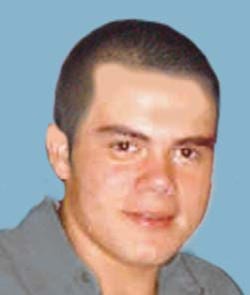
Drug lord Fernando Sanchez Arellano, pictured on a DEA wanted poster. A vacationing Baja California Sur resident was misidentified as the elusive drug trafficker.
Last Thursday, Mexico’s Marines announced that, with signal intelligence from the U.S. Drug Enforcement Agency (DEA), they had captured the son of notorious drug lord Joaquin Guzman Loera, also known as El Chapo. El Chapo is the most wanted man in Mexico and leads the Sinaloa Cartel, the largest organized crime syndicate in Mexico, with the possible of exception of Los Zetas. His son, Alfredo Guzman Salazar, was arrested in Guadalajara with guns and $135,000, the Marines announced.
There was only one problem with this announcement, which was heard and reported on around the world.
The Mexican Marines had misidentified the suspect as the son of the drug lord, said his lawyer last Friday. The person they had actually arrested was Felix Beltran, a used car salesman. Over the weekend, the Mexican government acknowledged its error and tried to blame it on the intelligence received from the United States.
Not the first time
This is not the first time that the Mexican government has misidentified an arrest subject who they claimed was a major trafficker. In 2011, photos of Fernando Sanchez Arellano, also known as El Ingeniero, surfaced on the Internet. A YouTube montage of photos showing El Ingeniero with his girlfriend even had the Mexican attorney general’s office convinced. Photos of El Ingeniero are valuable because the last known photos of him were taken when he was 16 (this is the one used on the DEA wanted poster for the Arellano Felix Organization). He is now approximately 32.
The real subject of the photos was a Baja California Sur resident and engineer on vacation with his girlfriend. Upon realizing he had been identified as El Ingeniero, he travelled to the United States and immediately turned himself in to authorities to try to rectify the situation.
Worst friends ever …
Put yourself in his shoes for a moment. You have just been identified as the head of a weakened but powerful crime family wanted by both the U.S. and Mexican governments, not to mention other criminals. You would be a fool not to fear for your safety. It was later discovered that it had all been a prank his friends had played that went viral. They thought he bore a passing resemblance to the crime lord and decided to post the montage on Youtube under the title “El Ingeniero.”
Why the Marines are in the lead in Mexico
As Wikileaks cables demonstrated, the U.S. government has more faith in the Mexico’s Marines to act on intelligence than Mexico’s Army. In one notable case, the U.S. government provided intelligence on the whereabouts of drug lord Arturo Beltran Leyva, head of the Beltran Leyva Organization.
The Army failed to act on the intelligence and the U.S. government then passed the information to the Marines, who promptly captured him. It is notable that four Mexican generals have now been accused of having been on the Beltran Leyva Organization payroll.
As Roderic Camp, a professor at the Claremont Graduate School who specializes in Mexican civil-military relations points out, the Mexican Marine officers tend to draw from the Mexican middle class who are more cosmopolitan and more likely to work with U.S. intelligence. They are also a smaller, better trained force than the Army, making them less susceptible to leaks and more effective for operations like the capture/kill of Arturo Beltran Leyva in 2009. Unfortunately, the Mexican Marines have fallen into the same trap as the Mexican attorney general’s office, failing to positively identify a suspect before parading him before the cameras. Hopefully, they will institute proper vetting mechanisms and take their time announcing arrests in the future.
Nathan Jones is the Alfred C. Glassell III Postdoctoral Fellow in Drug Policy at the Baker Institute. His areas of interest include U.S.-Mexico security issues, illicit networks and cross-border flows.